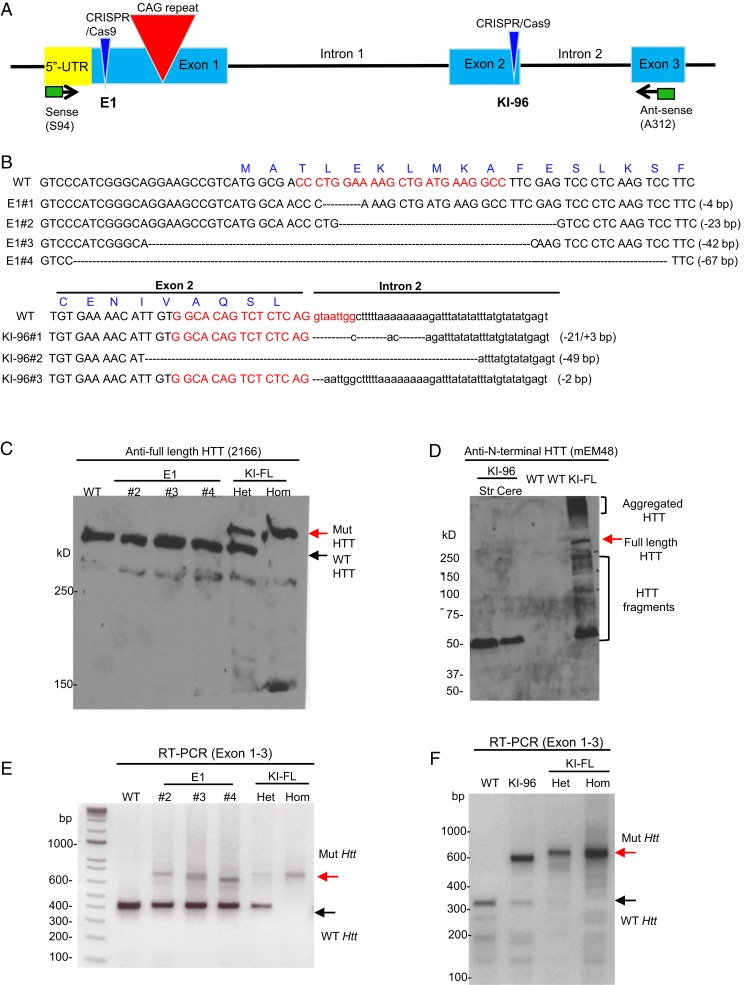Fig. 1.
Characterization of Htt expression in E1 and KI-96 mouse models. (A) Overview of CRISPR/Cas9 target sites in the Htt gene of HD140Q KI mice and primers (sense, S94, and antisense, A312) used for RT-PCR. (B) Sequencing results showing different deletion mutations caused by CRISPR/Cas9 cutting in four E1 mouse lines and three KI-96 mouse lines. Red letters are used to indicate gRNA sequences; uppercase letters are used to indicate exon sequences, and lowercase letters are used to indicate intron sequences. (C) Western blotting analysis showing full-length HTT in three individual E1 mice. WT, heterozygous (Het), and homozygous (Hom) HD140Q KI (KI-FL) mice were used as references to indicate the location of WT and mutant (Mut) full-length HTT. (D) Western blotting analysis showing N-terminal HTT with polyQ expansion in a KI-96 mouse. HTT fragments could result from mRNA incomplete splicing or the cleavage of HTT. Str, striatum; Cere, cerebellum. (E) RT-PCR analysis showing Htt mRNA expression in three individual E1 mice. (F) RT-PCR analysis showing Htt mRNA expression in a KI-96 mouse and Het and Hom HD140Q KI (KI-FL) mice.

